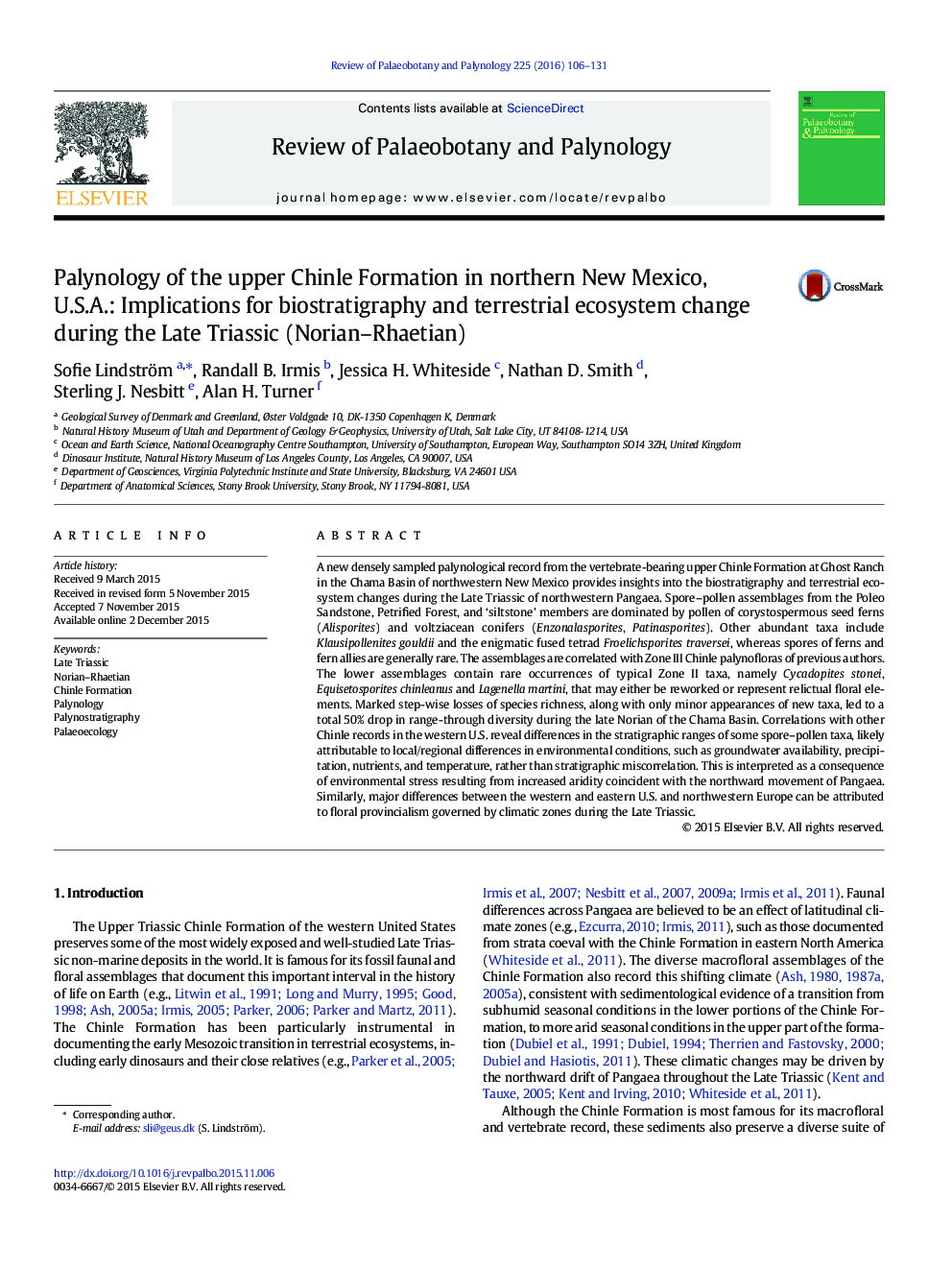| کد مقاله | کد نشریه | سال انتشار | مقاله انگلیسی | نسخه تمام متن |
|---|---|---|---|---|
| 4750111 | 1642472 | 2016 | 26 صفحه PDF | دانلود رایگان |

• New palynological data from the upper part of the Upper Triassic Chinle Formation
• Late Norian–Rhaetian age from palynostratigraphy and detrital zircon U–Pb age
• Evidence of major ongoing ecosystem change and restructuring of flora
• May help explain lack of herbivorous vertebrates in the Chinle fauna
• Global Late Triassic ecosystem change expressed differently on a regional scale
A new densely sampled palynological record from the vertebrate-bearing upper Chinle Formation at Ghost Ranch in the Chama Basin of northwestern New Mexico provides insights into the biostratigraphy and terrestrial ecosystem changes during the Late Triassic of northwestern Pangaea. Spore–pollen assemblages from the Poleo Sandstone, Petrified Forest, and ‘siltstone’ members are dominated by pollen of corystospermous seed ferns (Alisporites) and voltziacean conifers (Enzonalasporites, Patinasporites). Other abundant taxa include Klausipollenites gouldii and the enigmatic fused tetrad Froelichsporites traversei, whereas spores of ferns and fern allies are generally rare. The assemblages are correlated with Zone III Chinle palynofloras of previous authors. The lower assemblages contain rare occurrences of typical Zone II taxa, namely Cycadopites stonei, Equisetosporites chinleanus and Lagenella martini, that may either be reworked or represent relictual floral elements. Marked step-wise losses of species richness, along with only minor appearances of new taxa, led to a total 50% drop in range-through diversity during the late Norian of the Chama Basin. Correlations with other Chinle records in the western U.S. reveal differences in the stratigraphic ranges of some spore–pollen taxa, likely attributable to local/regional differences in environmental conditions, such as groundwater availability, precipitation, nutrients, and temperature, rather than stratigraphic miscorrelation. This is interpreted as a consequence of environmental stress resulting from increased aridity coincident with the northward movement of Pangaea. Similarly, major differences between the western and eastern U.S. and northwestern Europe can be attributed to floral provincialism governed by climatic zones during the Late Triassic.
Journal: Review of Palaeobotany and Palynology - Volume 225, February 2016, Pages 106–131